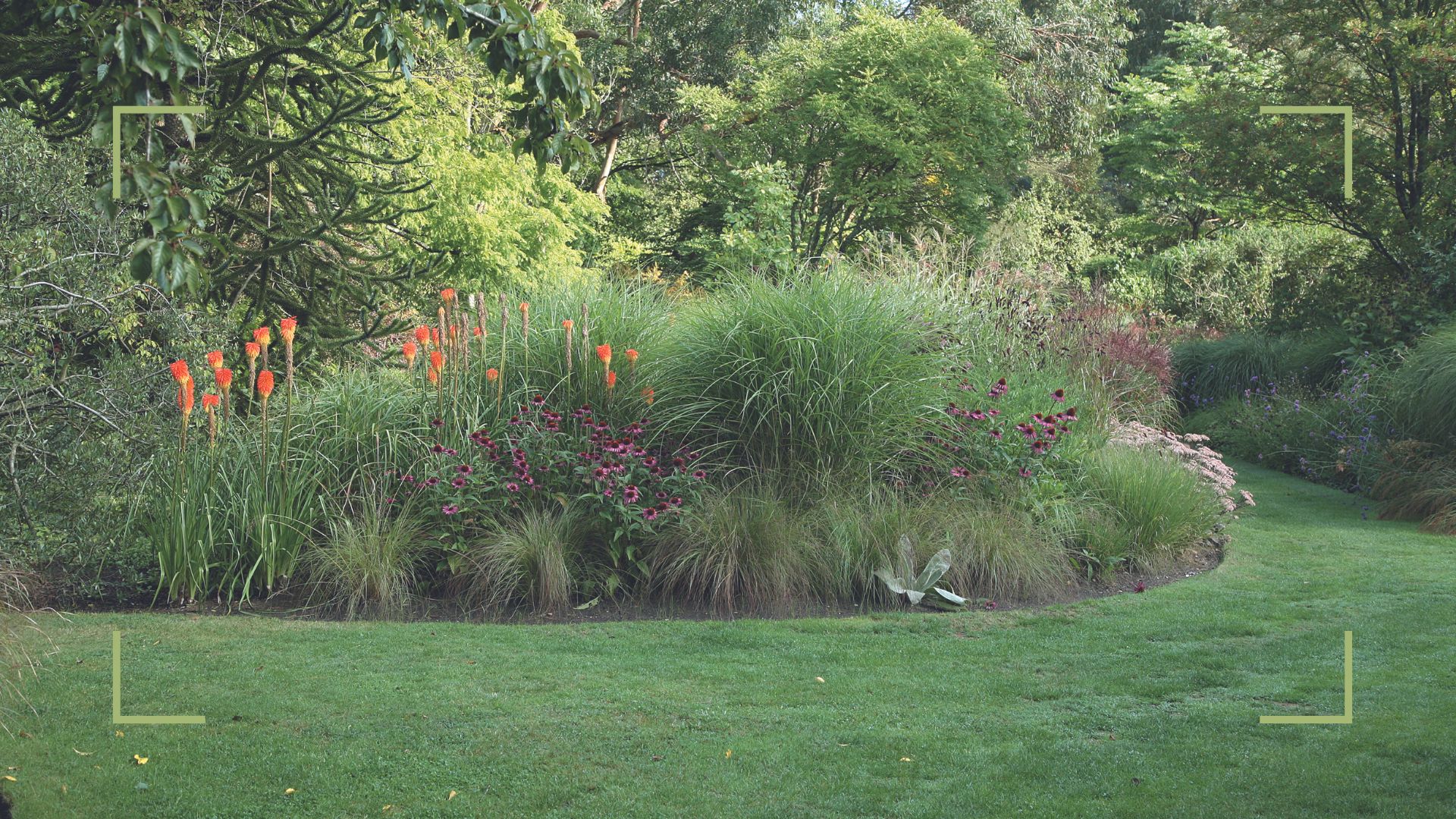When to first cut grass after winter, according to lawn care experts
Wondering when to first cut your grass this season? Professional gardeners and lawn experts explain the optimum time to cut grass after winter


Knowing when to first cut grass after winter is essential for encouraging a luscious lawn that'll thrive all summer long. Get it wrong and you run the risk of damaging the health of the grass.
With warmer temperatures and signs of spring appearing it's easy to see why now may feel like the perfect time to awaken the lawn to welcome a new lease of life after it's been dormant for months. However, the milder weather doesn't necessarily mean it's the opportune time to get the mower out and start replicating the latest garden trends.
Getting the timing right is key to avoiding any lawn care mistakes because with just one bad mow all your hard work and lawn maintenance can be undone.
Similar to assessing how often you need to mow the lawn or when to plant grass seed, the answer will vary slightly depending on the condition of your grass and the weather in your region.
We've spoken to lawn care professionals and garden landscape experts who revealed the best time to cut your lawn for the season - plus, tips on how to get the first trim of the year just right.
When to first cut grass after winter, according to experts
As the winter starts to ease, those with a backyard will start to think about getting out there to prep the grass for summer, but when and how you first cut the grass after winter is crucial for a happy, healthy patch of turf for the rest of the year ahead.
"Getting the timing right is the key to keeping your lawn healthy and making sure that you are doing no unnecessary harm to it," warns Chris McIlroy, a lawn expert at The Grass People. "As a rule of thumb, we recommend waiting until temperatures are consistently above 8 degrees before you think about mowing your lawn. When temperatures are below 8 degrees, your grass is typically in a state of dormancy, where it grows a very small amount, so slowly, it’s almost unnoticeable."
Sign up to our free daily email for the latest royal and entertainment news, interesting opinion, expert advice on styling and beauty trends, and no-nonsense guides to the health and wellness questions you want answered.
"Depending on where you live, those temperatures will come at different stages of the year. Make sure that if there is any sign of frost you avoid mowing as this can damage grass blades and increase the chance of diseases taking hold in your lawn," Chris explains. "You should also avoid mowing grass when it’s wet, try to cut on days when the grass has had a chance to dry, and don’t cut early in the morning if there is dew on the lawn."
Chris is the technical product lead and inhouse lawn seed expert for The Grass People, a grass seed company that champion their expert lead advice and high-quality seed. His advice is focused on sowing, mowing, and maintaining a perfect lawn, and how to overcome any lawn issues homeowners face.
"It’ll vary depending on your local weather, but we’d normally recommend doing the first cut of the year in late March or early April to be sure that frosts have ended," advises Gemma Vincent, product manager at Hayter.
"For the most part, it will be during March when you begin to mow," agrees Chris. "By April, if you haven’t already started, all parts of the country should be experiencing temperatures where they can. Begin by mowing as grass requires it, this shouldn’t be much more than twice in April. Once the weather starts to pick up in May this can be pushed up to once a week."

"Don’t be tempted to mow too early, especially if we still have colder overnight temperatures," warns Guy Jenkins, consumer manager at Johnsons Lawn Seed. "Starting too early in the season can spell trouble for your lawn as premature mowing can stress the dormant grass blades, weaken the root system, and increase susceptibility to disease.
It can also lead to thatch buildup and encourage weed growth, disrupting the grass's natural processes during its dormant period."

As the consumer manager at Johnsons Lawn Seed, the oldest lawn seed brand in the UK with a long and prestigious record of product innovation and grass breeding Guy is an certified expert on grass health and wellbeing.
5 expert tips for the first grass cut after winter
"Mowing the lawn is one of the more straightforward tasks when looking after your lawn’s health but there are a couple of rules to follow to make sure you’re doing everything right," explains Chris.
So here are five simple rules and gardening tips the professionals recommend when carrying out the first cut of a lawn after winter...
1. Get your lawn mover serviced
You might not have thought about your lawn mower since it went into hibernation last year, but now is the time to give it a once-over. "Make sure your mower is in good condition," advises Chris. "A quick service, making sure blades are sharp, is well worth the time and effort as it could prevent lots of hassle down the line."
Gemma adds: "If you’ve had your mower serviced during the offseason, great – newly-sharpened blades will help ensure your first cut is as smooth as possible."

2. Inspect the ground and remove debris
"Always inspect the ground for snow or frost before you start mowing," advises Chris Bonnet, the founder of Gardening Express. "If there is any, wait until it melts, but make sure that the ground is not too wet or soft.,"
"Remember to remove any debris, such as fallen sticks or stones that could harm the blades of your mower. This is important because making sure the blades are sharp is essential for an even cut and healthy grass growth."
3. Avoid cutting grass too short
The same applies to general lawn mowing maintenance, but with the first cut after winter, it's even more essential not to cut the grass too short for the sake of your mower. "You should make sure that you cut your grass on the highest setting on your mower so as not to shock the blades," warns Chris.
"It’s important that you avoid cutting your lawn too short on the first cut" agrees Gemma, "try not to cut each blade of grass more than 1/3 of its pre-mow length. After the first cut, you should aim to keep your grass at a consistent length throughout the course of the gardening year.”
Chris elaborates, "Following the first cut, you can drop the mowing height to the recommended height for your lawn. For fine lawns, the generally recommended height is 10-15 mm, for general-use lawns the recommended mowing height is 25-40 mm."
4. Aim for the longest lengths first
You don't need to mow your lawn as thoroughly as you normally would for the first cut of the year. Instead, cut the longest lengths first. "With the cutting blade raised a little higher than usual make sure to mow the longest patches of grass first, then go on to the shorter sections if needed," advises Chris.
"Grass doesn’t appreciate a hard cut at the start of the year, so you will often just take a small amount off the top. On a first cut, you may only cut those areas of the lawn that have grown a lot. You will gradually lower the blade over the next couple of cuts and therefore end up cutting the shorter sections later on."

5. Remove cuttings after the first cut
Like us, the lawn will be yearning for some warming sunny rays so be sure to clear the cuttings off the lawn after the initial cut after winter. "After first mowing, remove the cuttings to allow the grass to be exposed to the little sunshine that there is," suggests Chris Bonnet.
At other times of the year, experts advise that leaving the grass cuttings on the top of a lawn can provide the thriving lawn with valuable nutrients. So if you're not worried about the appearance you can leave them for future mows, but for now, remove them so the grass can absorb the sun's rays.
Is February too early to cut grass?
February may still be too early to safely cut grass because there is always the threat of temperatures dropping below the recommended 8 degrees, or even worse frosts. Grass is susceptible to damage from frost and therefore should be given the same care and consideration as you would protect plants from frost.
The advice is to wait until temperatures are consistently above 8 degrees before you think about mowing your lawn. When temperatures are below 8 degrees, your grass is typically still in a state of dormancy, where it grows an incremental amount, and therefore isn't ready for cutting because it won't grow back quickly enough to recover if the blades are too short to withstand unexpected frost damage. it also depends on the amount of rain forecast.
"The timing of your inaugural mow depends on the most talked about topic, the weather," says Guy. "Spring showers may leave your lawn damp, making it less than ideal for mowing. Wet grass can flatten under the mower blades, resulting in an uneven cut that can damage the grass and leave your lawn vulnerable to pests and diseases. It’s best to wait for a dry spell to ensure an effective and efficient mow."

Tamara is a highly experienced homes and interiors journalist with a career spanning over 22 years. Now the Lifestyle Editor of womanandhome.com, she previously spent 18 years working with the style teams at Country Homes & Interiors and Ideal Home. With these award-winning interior teams, she gained a wealth of knowledge and honed her skills and passion for styling and writing about every aspect of lifestyle and interiors.
A true homes and interiors expert, Tamara has been an ambassador for leading interior brands on multiple occasions, including appearing on Matalan’s The Show and presenting at top interior trend forecasting events such as the Autumn Fair and Spring Fair.